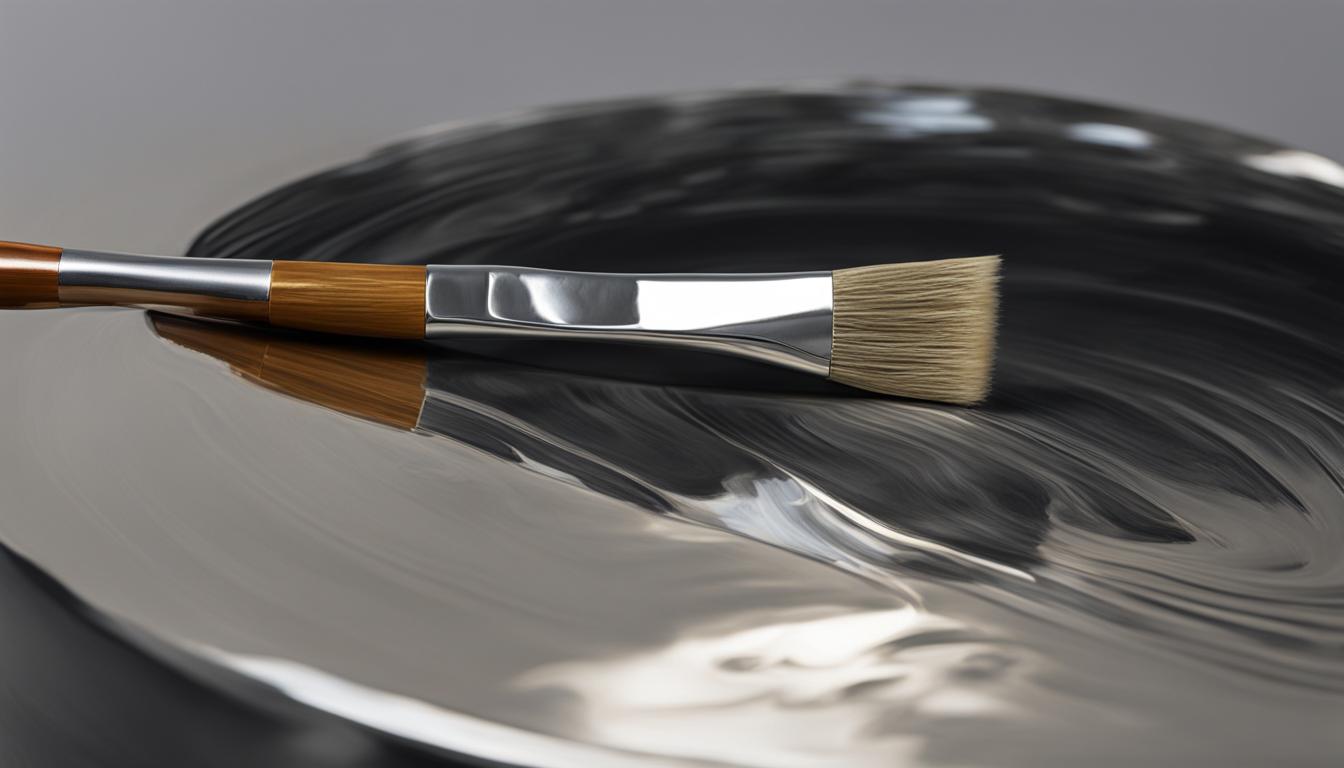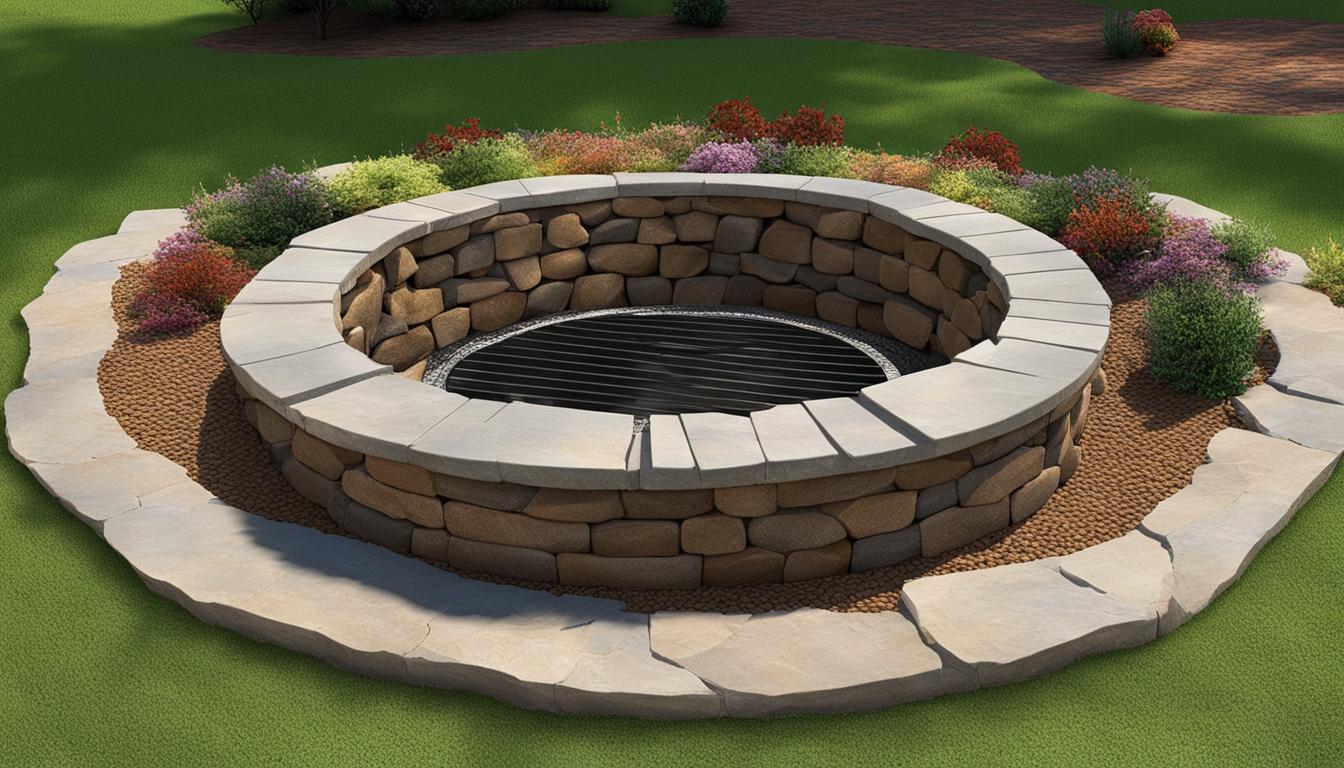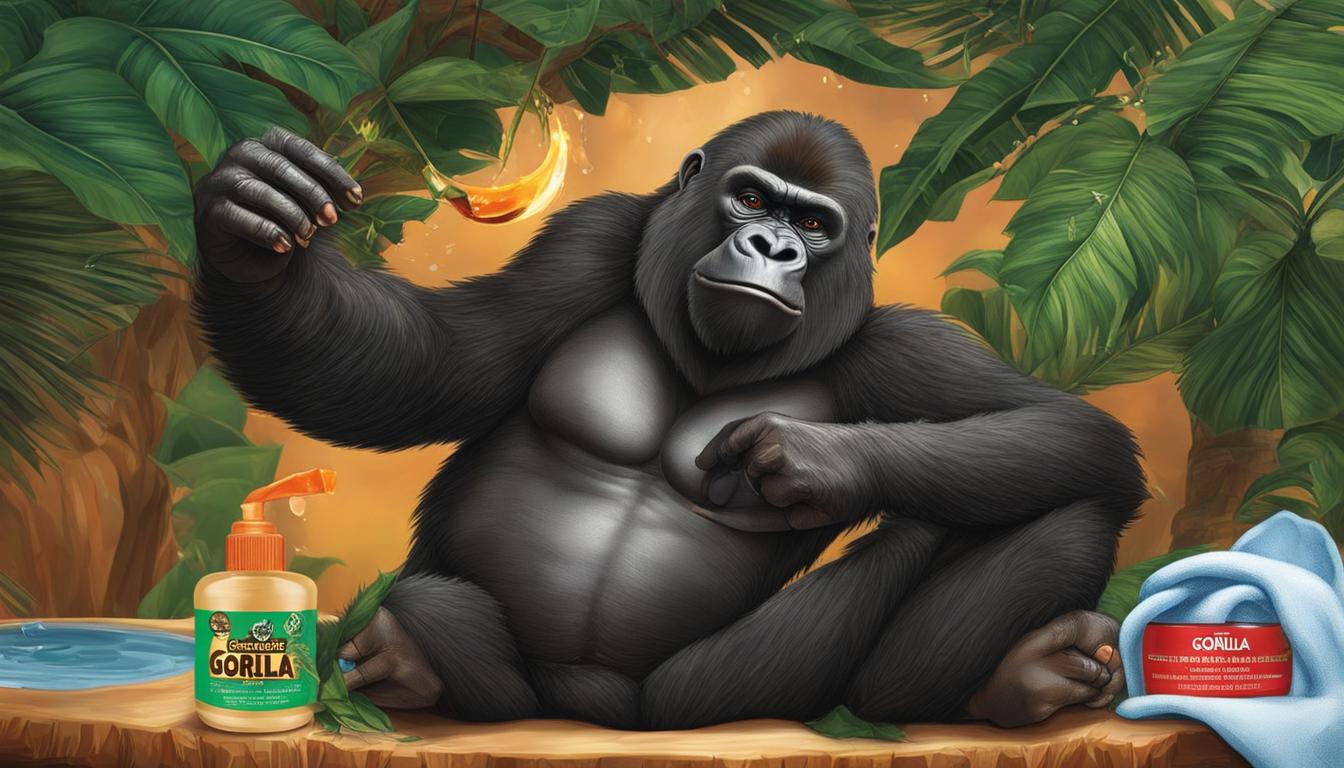Painting chrome surfaces can seem challenging, but with the right techniques and tips, you can achieve a lustrous finish. In this guide, I will take you through step-by-step instructions on how to paint chrome effectively, highlighting the best techniques and tips to achieve excellent results.
Key Takeaways:
- Understand the surface and prepare it before painting
- Choose the right paint designed for chrome surfaces
- Properly prep and mask the chrome surface to achieve a professional look
- Follow a step-by-step process for applying the paint
- Add a protective clear coat for enhanced durability
Understanding Chrome Surfaces and Preparing for Painting
Before you embark on your chrome painting journey, it’s crucial to understand the unique properties of chrome surfaces and prepare them properly. Chrome surfaces are known for their smooth and reflective nature, which can pose challenges when it comes to paint adhesion. However, with the right techniques and preparation, you can achieve a flawless painted finish.
To ensure a successful paint job on chrome surfaces, follow these essential steps:
- Clean the chrome surface: Begin by thoroughly cleaning the chrome surface with soap and water. This will remove any dirt, grime, or residues that could hinder paint adhesion. Ensure that the surface is completely dry before proceeding to the next step.
- Roughen the surface: Chrome surfaces have a smooth texture that makes it difficult for paint to adhere effectively. To improve paint adhesion, use fine-grit sandpaper to lightly roughen the surface. This will create micro-abrasions that provide a better grip for the paint.
- Apply a chrome primer: Applying a primer designed specifically for chrome surfaces is crucial to enhancing paint adhesion and durability. The primer acts as a bonding agent between the chrome surface and the paint, ensuring a long-lasting finish. Follow the manufacturer’s instructions for proper application.
Benefits of Proper Surface Preparation:
“Properly preparing the chrome surface is essential for achieving a professional-looking paint job. It creates a strong bond between the surface and the paint, ensuring excellent adhesion and durability.”
By understanding the unique properties of chrome surfaces and following these preparation steps, you set a solid foundation for a successful paint job. The combination of a clean, roughened surface and a high-quality primer will greatly improve paint adhesion and increase the longevity of your paintwork.
| Advantages of Proper Surface Preparation: | Disadvantages of Inadequate Surface Preparation: |
|---|---|
| • Enhanced paint adhesion | • Poor paint adhesion |
| • Increased durability | • Paint peeling or chipping |
| • Professional-looking finish | • Uneven paint coverage |
Choosing the Right Paint for Chrome
When it comes to painting chrome surfaces, selecting the right paint is crucial for achieving a flawless finish. The market offers various options, but it’s essential to choose a paint that is specifically designed for chrome surfaces. These chrome-specific spray paints are formulated to adhere well to the smooth surface and provide long-lasting durability.
One important factor to consider when choosing a paint is its durability. Chrome surfaces are often exposed to harsh conditions, such as sunlight and temperature fluctuations. Therefore, opt for a paint that offers high durability and is resistant to heat to ensure that your paint job stands the test of time.
Another aspect to look for in a paint for chrome is a quick-drying formula. Paints that dry quickly facilitate a smoother application process and minimize the risk of drips or uneven coverage. Time is of the essence when painting chrome, so selecting a quick-drying paint can significantly contribute to achieving a professional-looking result.
Here are some key factors to consider when choosing the best paint for chrome:
- Durability and heat resistance
- Chrome-specific formulation
- Quick-drying formula
Top Pick: Chrome Paint Spray
“For a seamless painting experience and a stunning chrome finish, I highly recommend using a chrome paint spray. These spray paints are tailored for chrome surfaces, ensuring excellent adhesion and long-lasting results. With their quick-drying formula and exceptional durability, they make the painting process a breeze.”
| Product Name | Durability | Heat Resistance | Drying Time |
|---|---|---|---|
| Brand A Chrome Paint Spray | High | Yes | Quick |
| Brand B Chrome Paint Spray | Exceptional | Yes | Rapid |
| Brand C Chrome Paint Spray | Long-lasting | Yes | Fast |
As seen in the table above, there are several reliable options available in the market. Brand A offers high durability and a quick-drying time, making it a popular choice among DIY enthusiasts. Brand B provides exceptional durability and rapid drying, making it ideal for professional painters. Brand C focuses on long-lasting results and fast drying, ensuring efficiency in the painting process.
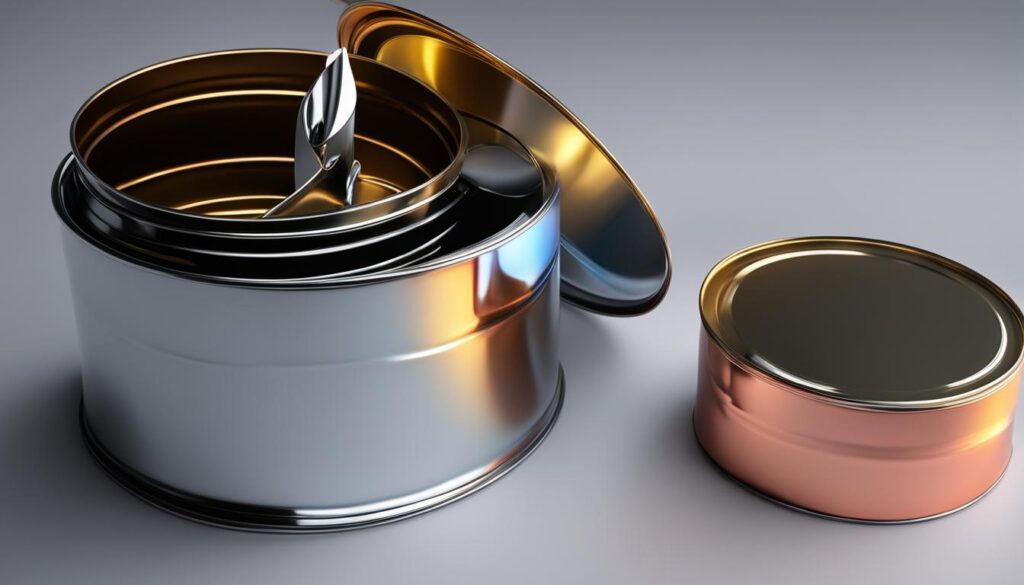
Remember, choosing the right paint for chrome is crucial for achieving a flawless and durable finish. Consider the specific requirements of your project, such as the surface’s exposure to heat or harsh conditions, and select a paint that meets those needs. With a chrome paint spray formulated for chrome surfaces, you can confidently embark on your painting journey, knowing that you have the best paint for the job.
Prepping and Masking the Chrome Surface
Proper preparation and masking are crucial steps in achieving a professional-looking paint job on chrome surfaces. To ensure a smooth and successful application process, follow these essential tips:
1. Remove Loose or Flaking Chrome
Prior to painting, it is vital to remove any loose or flaking chrome from the surface. Use a scraper or sandpaper to gently eliminate any imperfections that could affect the adhesion of the paint.
2. Protect Areas You Don’t Want to Paint
When painting chrome surfaces, it is crucial to protect areas that you don’t want to be painted, such as trim or surrounding surfaces. This can be easily accomplished by using masking tape.
Pro Tip: Make sure to securely apply the masking tape to prevent any paint bleed or overspray.
| Materials | Quantity |
|---|---|
| Masking tape | 1 roll |
By following these prepping and masking tips, you can achieve a clean and precise paint job on your chrome surfaces, ensuring professional-looking results.
Applying the Paint
When it comes to achieving a flawless chrome finish, applying the paint correctly is key. By following a step-by-step process, you can ensure optimal results that will make your chrome surface shine.
First, start by thoroughly shaking the chrome paint spray can to mix the paint. This ensures an even distribution of the pigments for a consistent color.
Next, hold the can about 6-8 inches away from the surface you’re painting. This distance allows for better control and prevents overspray.
Apply thin, even coats of paint to the chrome surface. Avoid spraying too much paint at once, as it can lead to drips or uneven coverage. The key here is to build up layers gradually, allowing each coat to dry before applying the next.
Patience is crucial during the application process. It’s better to apply multiple thin coats rather than one thick coat. This approach helps prevent paint runs and ensures a smooth, professional-looking finish.
Continue applying coats until you achieve the desired depth and coverage. Remember, it’s always easier to add more paint if needed than to remove excess paint later.
Once you’re satisfied with the paint coverage, allow the final coat to dry completely according to the manufacturer’s instructions. This ensures that the paint bonds properly to the chrome surface.
Now, stand back and admire your beautifully painted chrome surface. The lustrous finish will surely turn heads wherever it’s displayed.
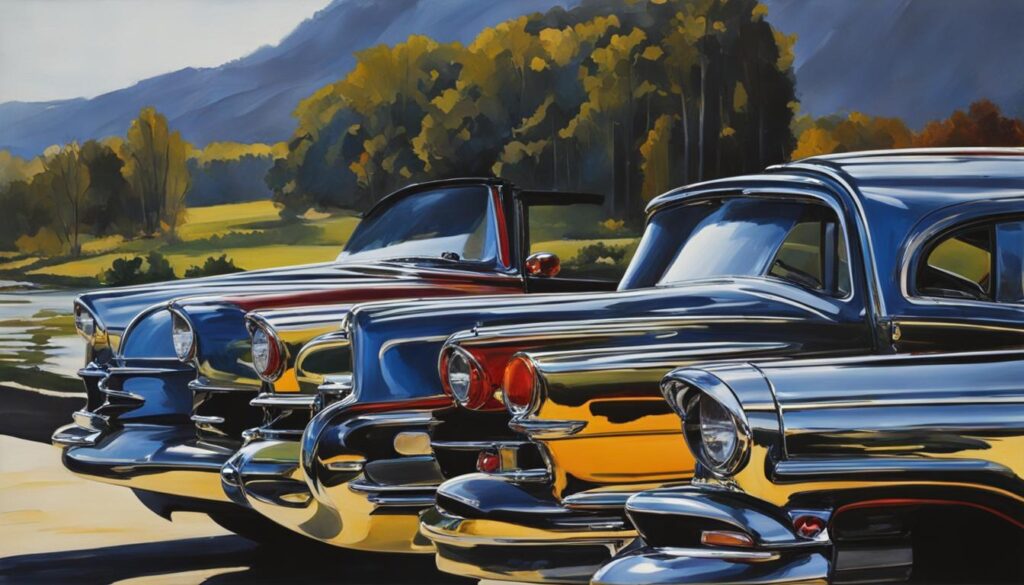
| Step | Instructions |
|---|---|
| Step 1 | Thoroughly shake the chrome paint spray can to mix the paint. |
| Step 2 | Hold the can about 6-8 inches away from the surface. |
| Step 3 | Apply thin, even coats of paint. |
| Step 4 | Allow each coat to dry before applying the next. |
| Step 5 | Repeat the process until the desired finish is achieved. |
Achieving a Smooth and Lustrous Finish
The key to achieving a professional-looking finish on your painted chrome surface lies in mastering the right techniques. By focusing on your painting technique and following a few simple tips, you can create a smooth and lustrous finish that will make your chrome surface shine.
When it comes to applying the paint, use light and sweeping motions. This technique helps to avoid excessive buildup or streaks that can detract from the final result. Apply the paint evenly, ensuring that there are no patches or uneven coverage. Take your time and be mindful of any drips or areas where the paint may have pooled.
Allow each coat of paint to dry completely before applying the next one. This step is crucial to achieving a flawless finish. Rushing the drying process can lead to smudging or uneven texture, so exercise patience and give the paint ample time to dry.
Remember, the key to a smooth and lustrous finish is to pay attention to every detail and take your time. By using the right technique, you can transform your painted chrome surface into a stunning masterpiece.
Tips for Achieving a Smooth and Lustrous Finish:
- Apply the paint in light and sweeping motions to avoid buildup and streaks
- Aim for even coverage and avoid patches or uneven spots
- Be mindful of drips and areas where the paint may have pooled
- Allow each coat to dry completely before applying the next
By following these tips and practicing your technique, you’ll be able to achieve a smooth and lustrous finish on your painted chrome surface. Take your time, be patient, and enjoy the process of transforming your chrome into a work of art.
Adding a Protective Clear Coat
When it comes to painting chrome surfaces, durability is key. To ensure that your painted chrome surface withstands the tests of time, adding a protective clear coat is essential. A clear coat serves as an additional layer of protection, safeguarding your paint job against scratches and UV damage.
Opt for a clear coat specifically designed for chrome surfaces to ensure compatibility and optimal performance. Follow the manufacturer’s instructions for application, including the recommended number of coats and drying time between each coat.
Applying a clear coat not only enhances the durability of the paint but also provides a glossy finish, adding a touch of elegance to your chrome surface. The clear coat acts as a sealant, preserving the vibrancy of the paint and ensuring a long-lasting, professional-looking result.
With a protective clear coat, your DIY chrome painting project will not only look stunning but also stand the test of time. Remember, the key to achieving a durable and glossy finish is choosing the right clear coat and following the manufacturer’s instructions for application.
Curing and Maintaining Painted Chrome Surfaces
After completing the painting process, it’s crucial to allow the paint to cure properly before subjecting it to any harsh conditions. Follow the recommended curing time provided by the paint manufacturer to ensure optimal durability.
Once fully cured, maintaining your painted chrome surface is essential to preserve its lustrous appearance and longevity. Regular cleaning with a mild soap and water solution will help remove dirt and grime without damaging the paint.
Tip: Avoid using harsh cleaners or abrasive materials that could scratch or deteriorate the paint.
Here’s a simple step-by-step guide to maintaining your painted chrome surfaces:
- Fill a bucket or container with warm water.
- Add a few drops of mild dish soap or car wash soap to create a gentle cleaning solution.
- Dip a soft sponge or microfiber cloth into the soapy water, ensuring it’s not too wet.
- Gently wipe the painted chrome surface with the sponge or cloth, removing any dirt or residue.
- Rinse the surface with clean water to remove any soap residue.
- Dry the surface thoroughly with a clean, soft towel to prevent water spots.
By following these maintenance tips, you can keep your painted chrome surfaces looking vibrant and protect the integrity of the paint for years to come.
Avoiding Common Mistakes in Maintaining Painted Chrome
While maintaining your painted chrome surfaces, it’s important to avoid common mistakes that can compromise the durability and appearance of the paint. Here are some tips to keep in mind:
- Avoid using abrasive materials: Scrub brushes, steel wool, or abrasive cleaning pads can scratch the paint. Stick to soft sponges or microfiber cloths.
- Don’t use acidic or alkaline cleaners: Products containing strong acids or alkalis can damage the paint. Stick to mild soaps designed for automotive use.
- Protect the surface from sharp objects: Be cautious when placing objects on painted chrome surfaces to prevent scratches or chipping.
- Regularly inspect the paint: Keep an eye out for any signs of peeling, cracking, or fading. If you notice any issues, address them promptly to prevent further damage.
By following these tips and being proactive in maintaining your painted chrome surfaces, you can enjoy their beauty and longevity for years to come.
Troubleshooting Common Issues
While painting chrome surfaces, you may encounter some common issues such as drips, uneven coverage, or paint peeling. Don’t worry, these problems can be addressed with the right techniques. Here are some troubleshooting tips to help you achieve the desired results:
Sanding and Reapplying Paint
If you notice drips or uneven coverage on your painted chrome surface, lightly sand the affected area using fine-grit sandpaper. This will help smooth out any imperfections and create a more even surface. Once sanded, reapply the paint following the proper technique to ensure consistent coverage. Remember to shake the paint can thoroughly before each application to achieve a well-mixed paint.
Seeking Professional Advice
If you’ve tried troubleshooting on your own but still can’t resolve the issue, it may be time to seek professional advice or assistance. Professional painters or automotive experts have experience dealing with chrome surfaces and can offer valuable insights and solutions to your painting problems. They can guide you through the process and help you achieve the desired results.
“Troubleshooting painting issues requires patience and persistence. Don’t hesitate to reach out for help if needed. Expert advice can save you time and frustration, ensuring a successful paint job on your chrome surfaces.” – [Your Name]
Remember, mastering the art of chrome painting takes practice and experimentation. Don’t be discouraged by common issues along the way. Troubleshoot with confidence and seek assistance when necessary. With persistence and the right techniques, you’ll be able to achieve stunning results on your DIY chrome painting projects.
Alternative Options for Transforming Chrome Surfaces
If painting chrome surfaces seems challenging or if you’re looking for alternative options, there are other methods available that can transform chrome surfaces with a durable and long-lasting finish. Consider these alternative techniques:
Vinyl Wrapping
One option is vinyl wrapping, which involves applying a specially designed vinyl film to the chrome surface. Vinyl wraps come in various colors and finishes, allowing you to achieve the desired look for your chrome surfaces. The vinyl film adheres tightly to the chrome, creating a smooth and seamless finish that resembles a painted surface. This method provides durability and protects against scratches and UV damage.
Chrome Plating
Another alternative option for transforming chrome surfaces is chrome plating. This process involves electroplating a thin layer of chrome onto the surface. Chrome plating provides a highly reflective and shiny finish that enhances the appearance of chrome surfaces. The electroplated chrome layer also offers excellent durability and resistance to tarnishing and corrosion. However, chrome plating is a complex process that requires specialized equipment and expertise, so it may be best left to professionals.
Both vinyl wrapping and chrome plating offer viable alternatives to traditional chrome painting techniques. Consider these methods based on your preferences, skill level, and desired outcome for transforming your chrome surfaces.

Showcasing Your Painted Chrome Surfaces
Once you’ve successfully painted your chrome surfaces, it’s time to showcase your work. Whether it’s on a car, motorcycle, or other chrome accessories, take pride in displaying your beautifully painted surfaces. Share your accomplishments with others who appreciate the art of chrome painting and inspire them to try it themselves.
Conclusion
Painting chrome surfaces can be a challenging task, but with the right techniques and tips, you can achieve remarkable results. By understanding the surface, selecting the appropriate paint, following proper preparation and application techniques, and maintaining the painted chrome surfaces, you can easily transform them. Whether you’re a DIY enthusiast or a professional, mastering the art of chrome painting opens up a world of customization and creativity.
Throughout this guide, I have provided step-by-step instructions on how to paint chrome effectively. We have explored the importance of surface preparation, the selection of the right paint, proper masking techniques, and the application process. Additionally, I have shared tips on achieving a smooth and lustrous finish, adding a protective clear coat, and maintaining painted chrome surfaces for long-lasting durability.
With the knowledge gained from this guide, you now have the confidence to take on any chrome painting project. Whether you want to refresh the look of your car’s chrome trim or transform an entire motorcycle, these techniques and tips will help you achieve professional-quality results. Get ready to showcase your beautifully painted chrome surfaces and inspire others to explore the art of chrome painting.
FAQ
How do I prepare a chrome surface for painting?
Start by cleaning the chrome surface thoroughly with soap and water. Then, use fine-grit sandpaper to roughen the surface slightly. Finally, apply a primer specifically designed for chrome surfaces to promote paint adhesion and enhance durability.
What is the best paint to use for chrome surfaces?
Look for chrome-specific spray paints that are designed to adhere well to the smooth surface and provide a durable finish. Choose paints with high durability and heat resistance for long-lasting results.
How do I properly prep and mask a chrome surface for painting?
Remove any loose or flaking chrome using a scraper or sandpaper. Then, use masking tape to protect any areas you don’t want to paint, such as trim or surrounding surfaces. Ensure the masking tape is applied securely to prevent paint bleed or overspray.
What is the correct technique for applying paint to a chrome surface?
Shake the chrome paint spray can thoroughly to mix the paint. Hold the can about 6-8 inches away from the surface and apply thin, even coats of paint. Allow each coat to dry before applying the next for a smooth finish.
How can I achieve a smooth and lustrous finish on a painted chrome surface?
Apply the paint using light, sweeping motions to avoid excessive buildup or streaks. Aim for even coverage and be mindful of any drips or uneven application. Allow the paint to dry completely between coats for a flawless finish.
Should I add a protective clear coat to my painted chrome surface?
Yes, adding a clear coat provides an extra layer of protection against scratches and UV damage. Choose a clear coat specifically designed for chrome surfaces and apply it according to the manufacturer’s instructions.
How long should I let the paint cure on a painted chrome surface?
Follow the recommended curing time provided by the paint manufacturer to ensure optimal durability. Allow the paint to cure properly before subjecting it to any harsh conditions.
How do I troubleshoot common issues when painting chrome surfaces?
If you encounter drips, uneven coverage, or paint peeling, lightly sand the affected area and reapply the paint using the correct technique. Seek professional advice if the issue persists.
What are the alternative options for transforming chrome surfaces?
Consider vinyl wrapping, which involves applying a vinyl film to the chrome surface, or chrome plating, which electroplates a thin layer of chrome onto the surface.
How can I showcase my painted chrome surfaces?
Display your beautifully painted surfaces on cars, motorcycles, or other chrome accessories. Share your work with others who appreciate the art of chrome painting and inspire them to try it themselves.
